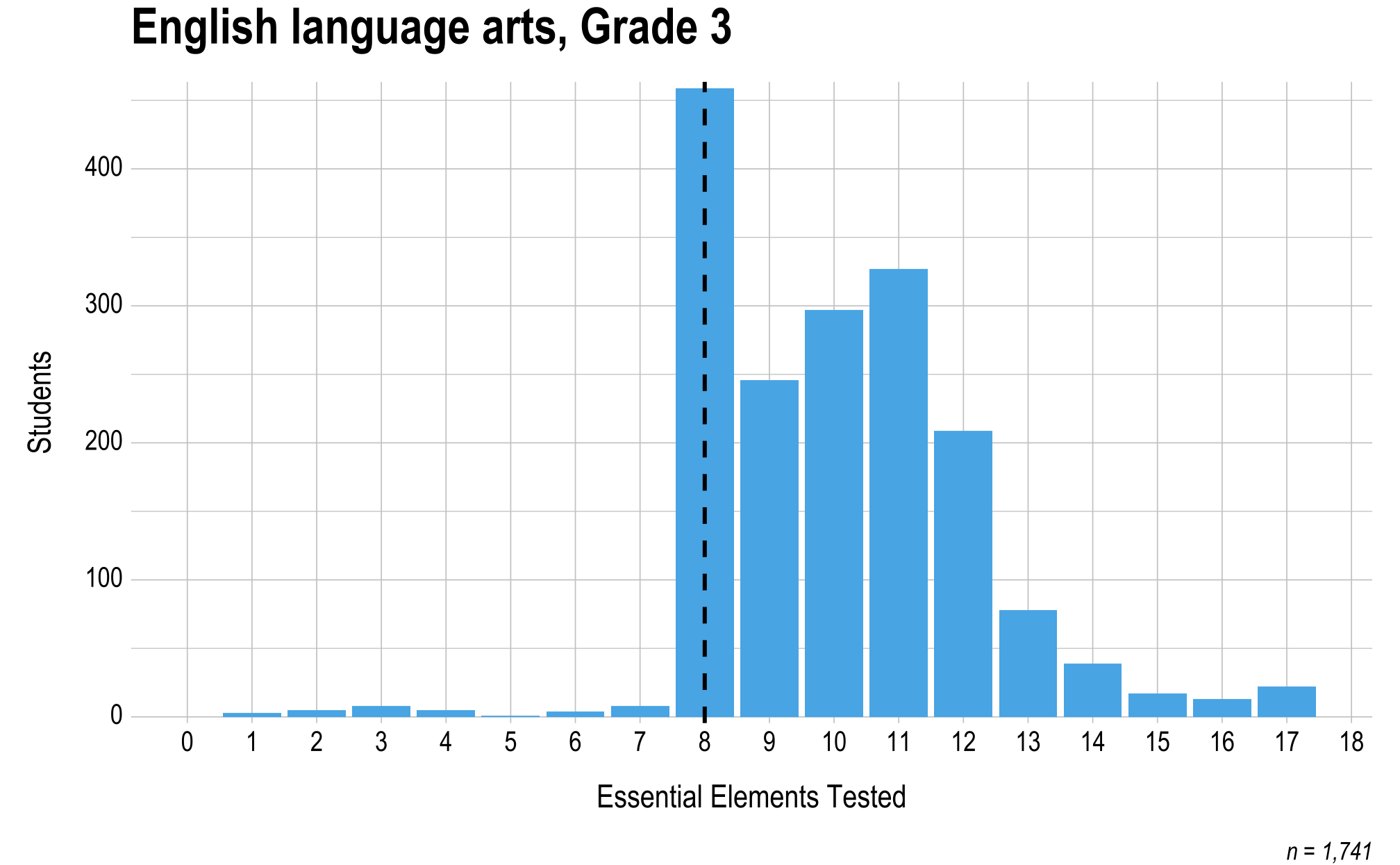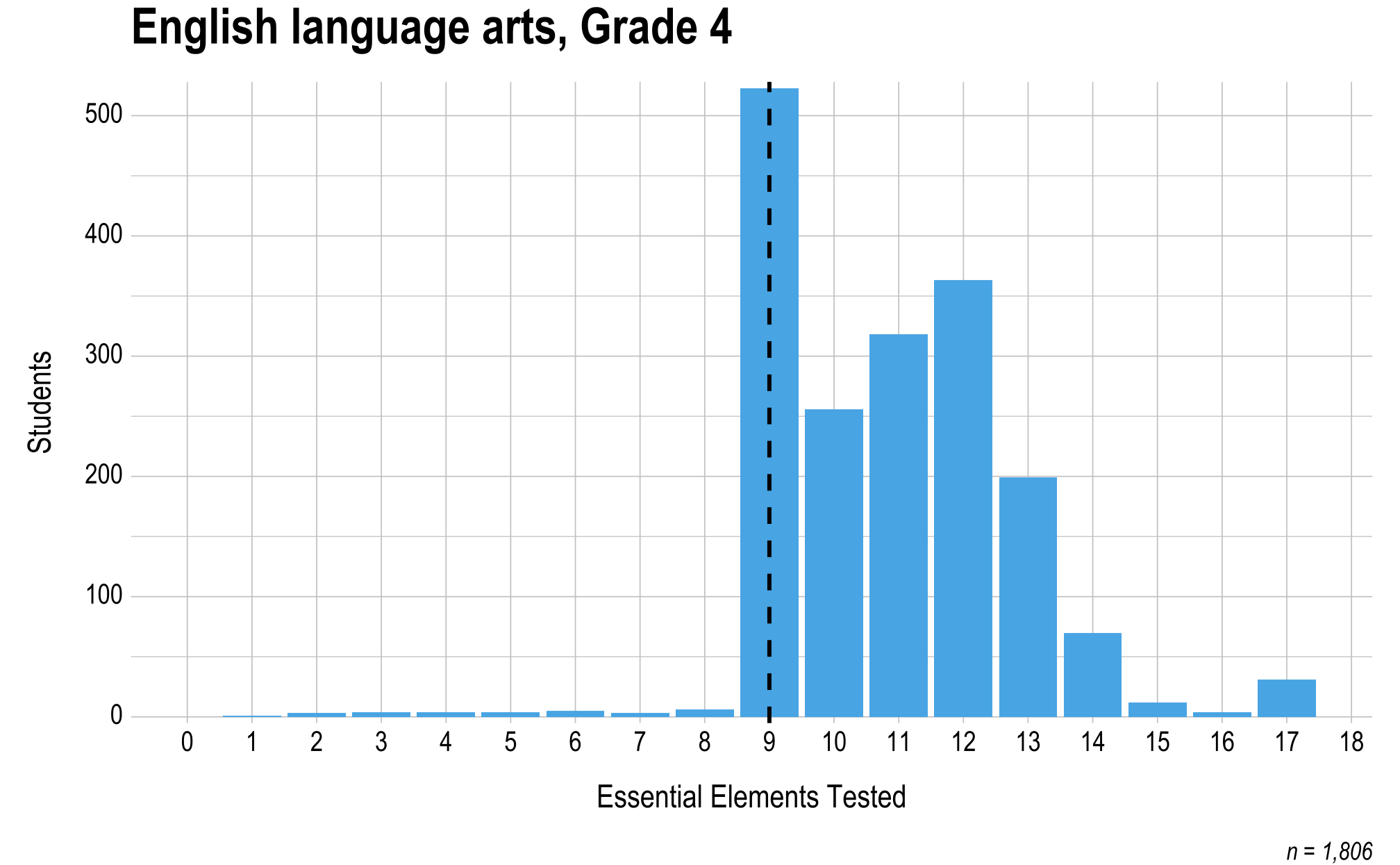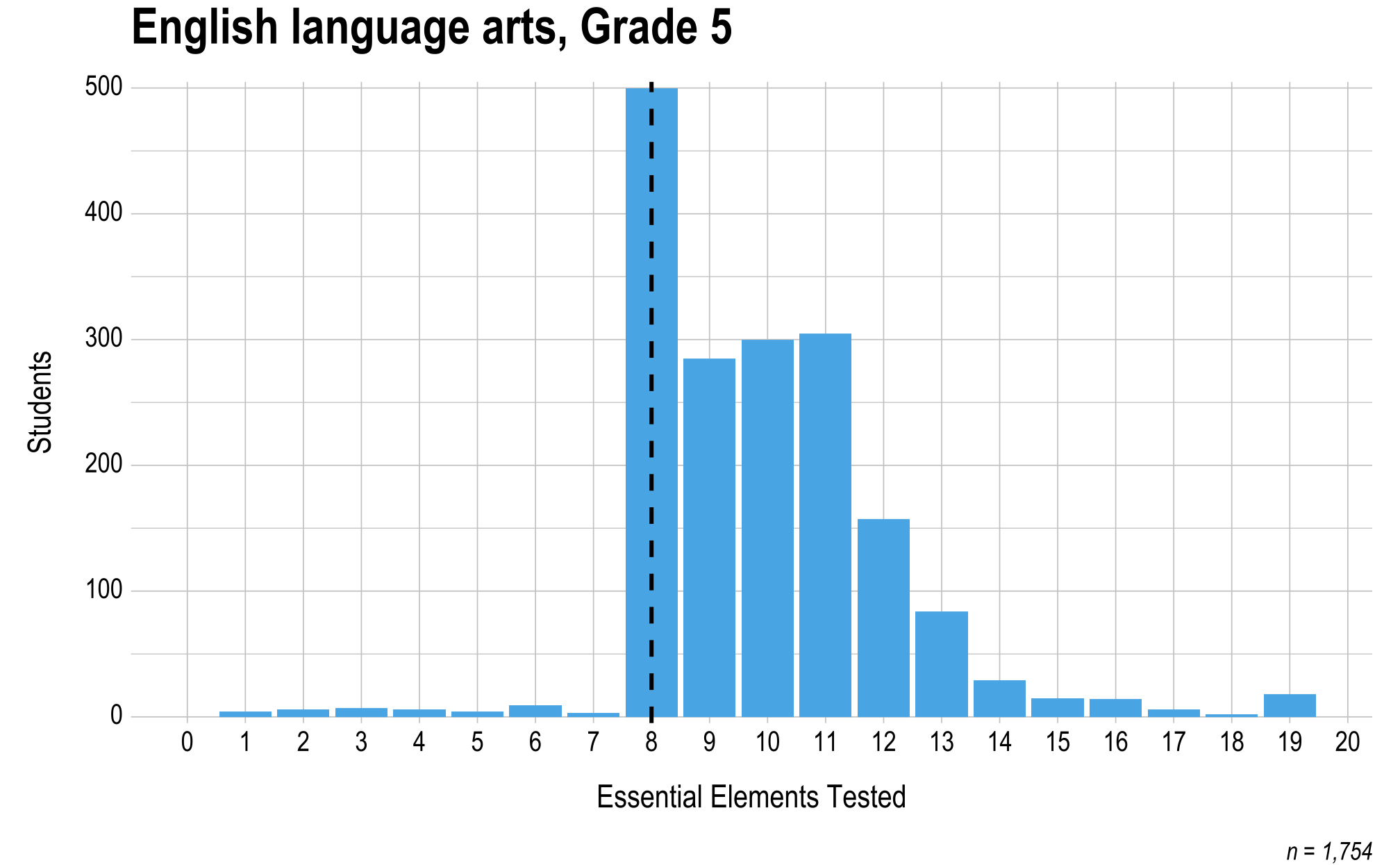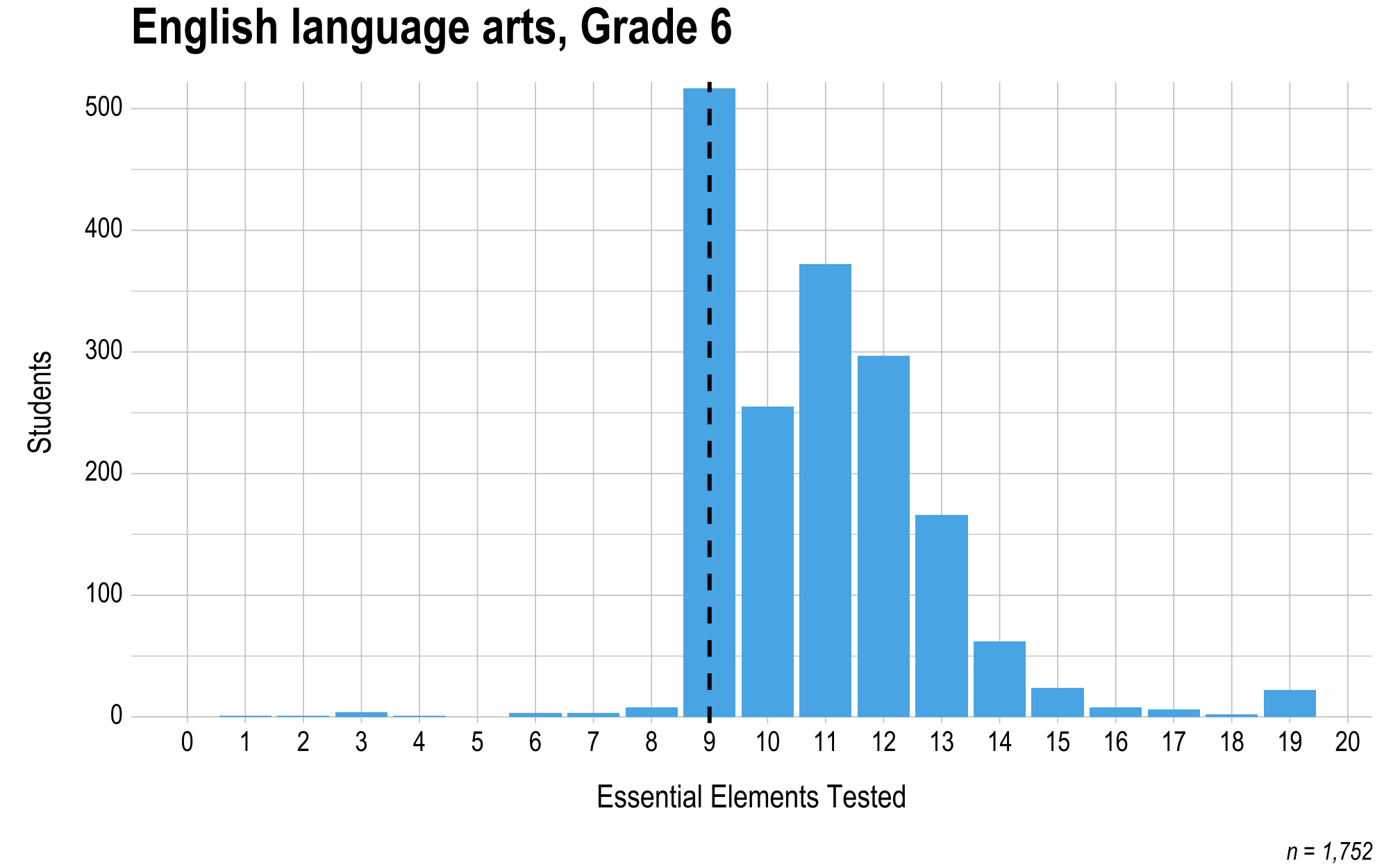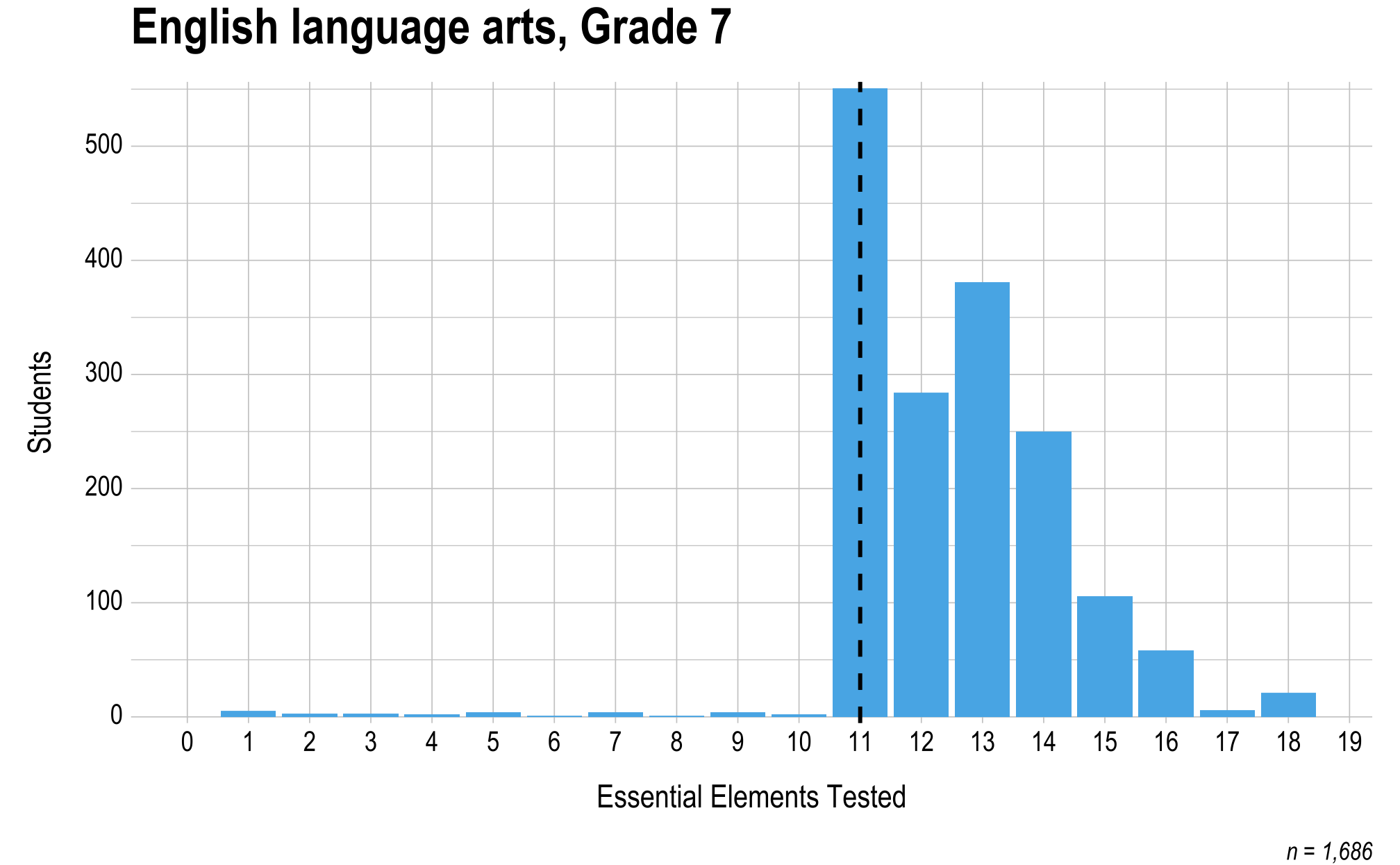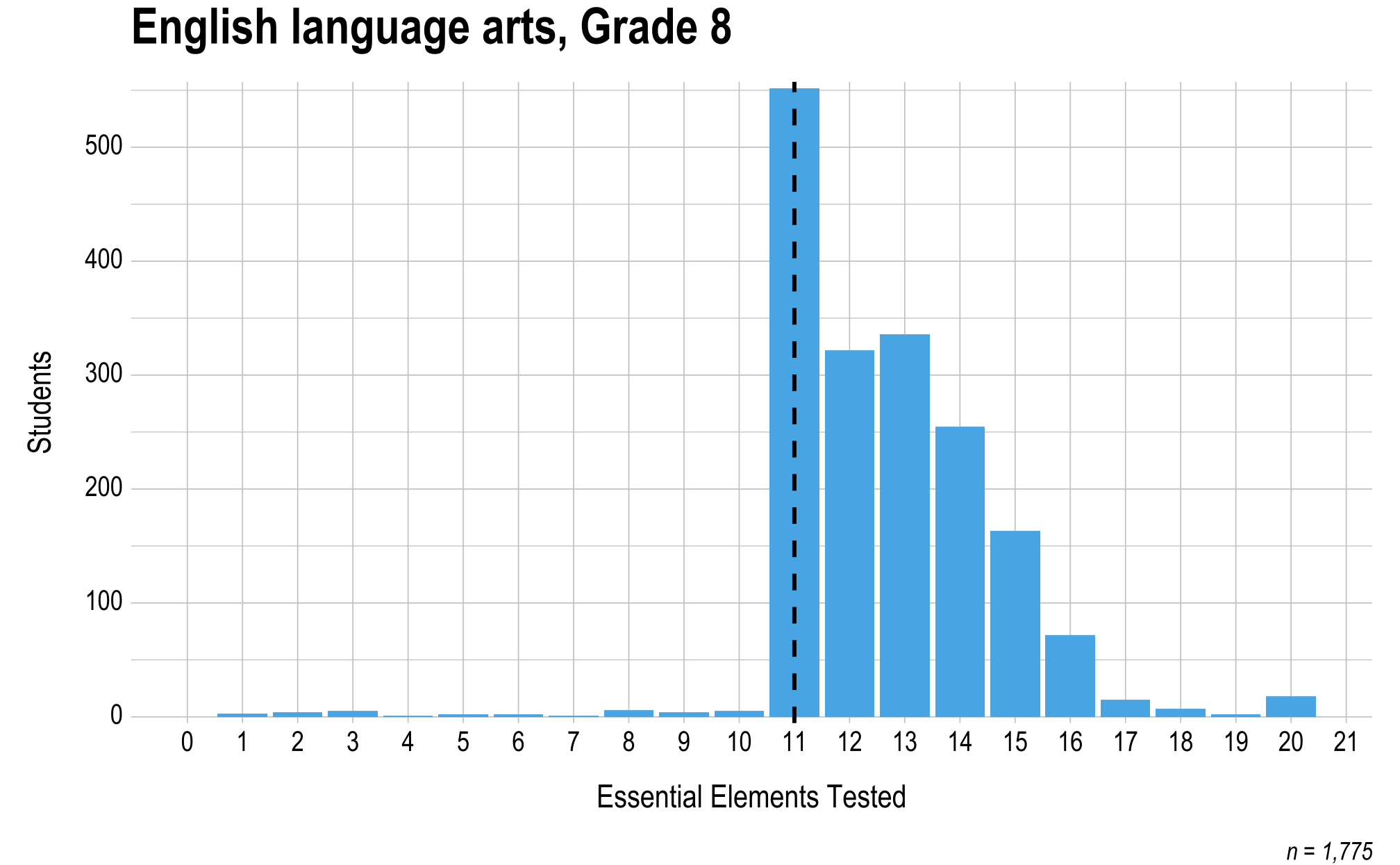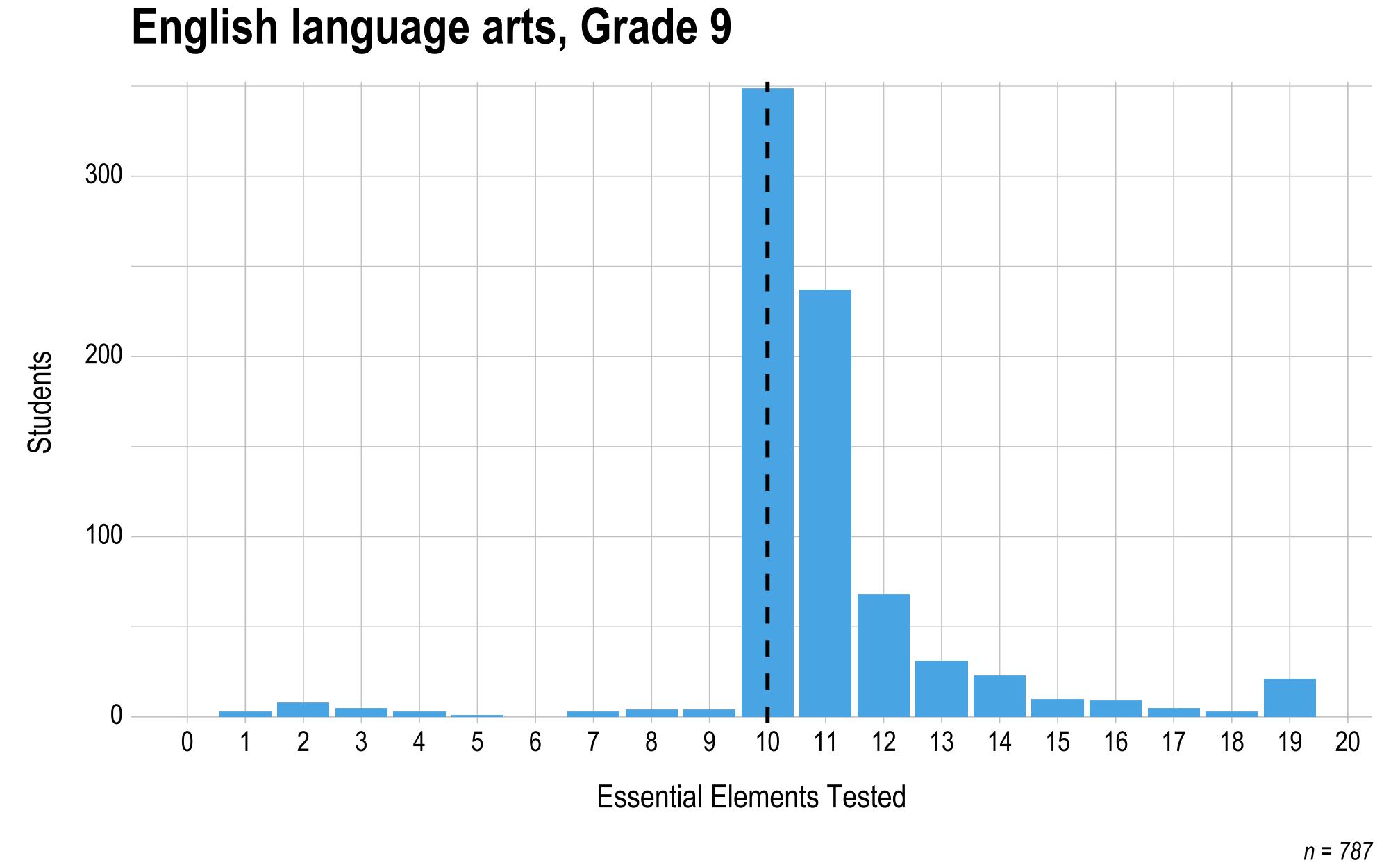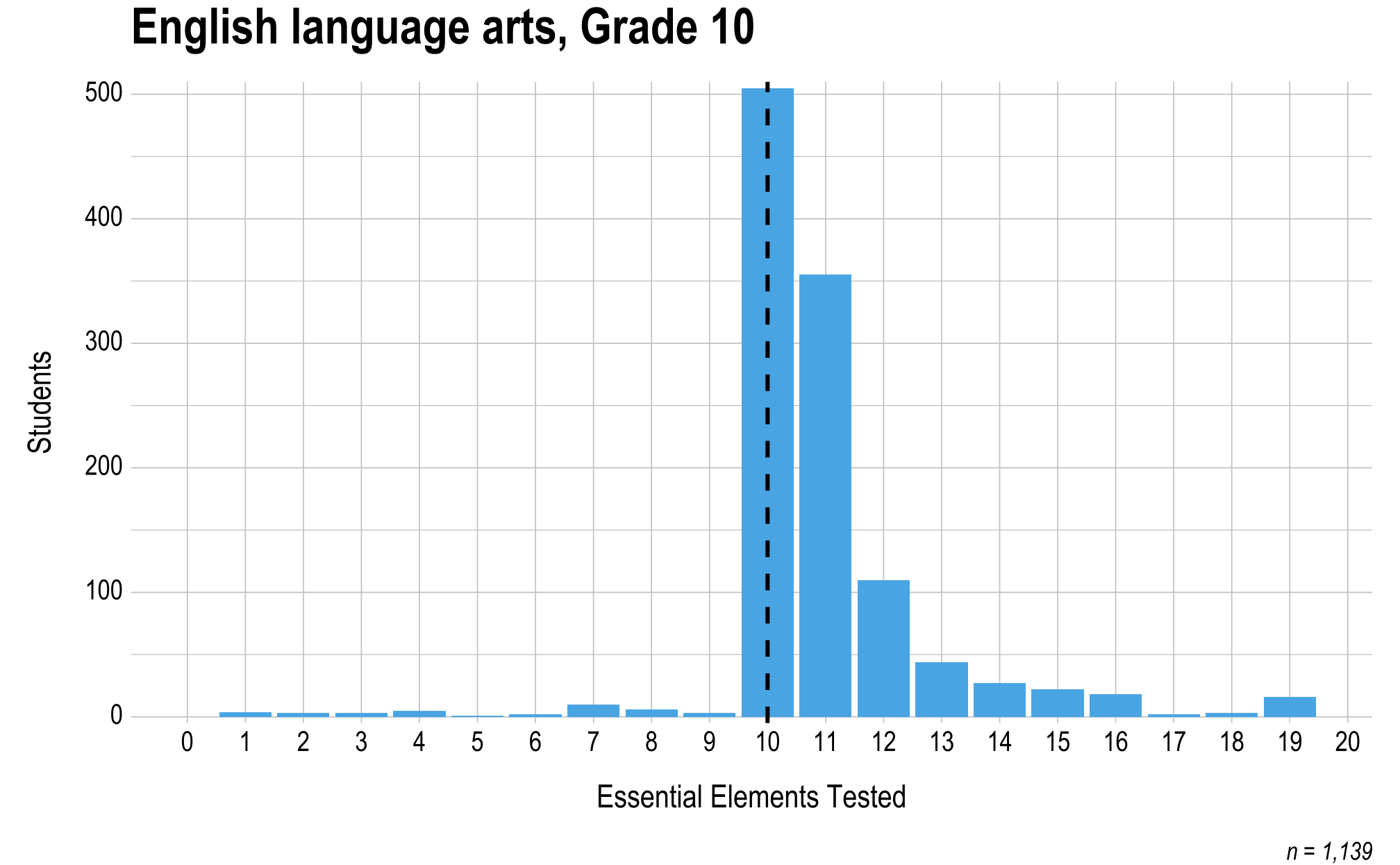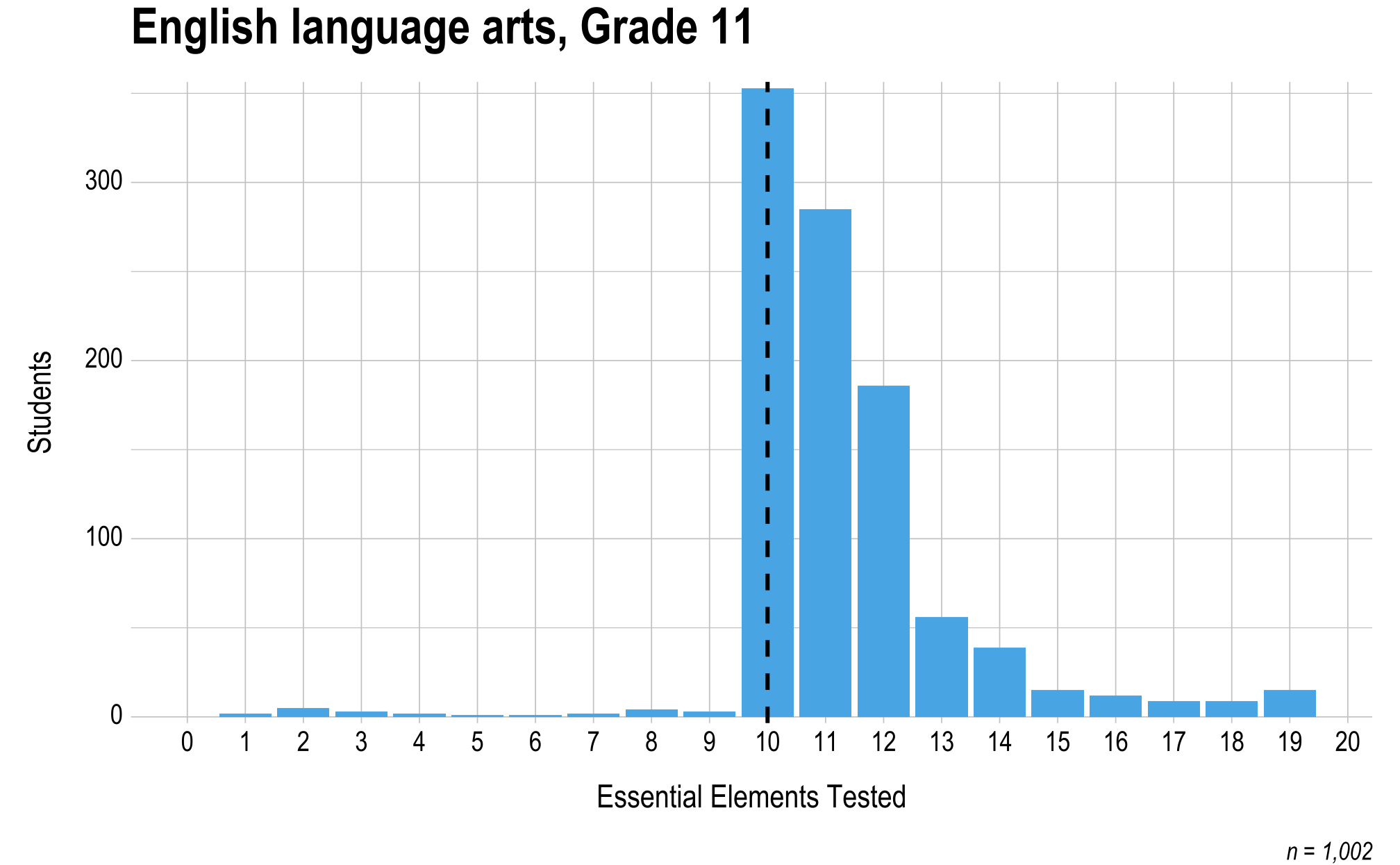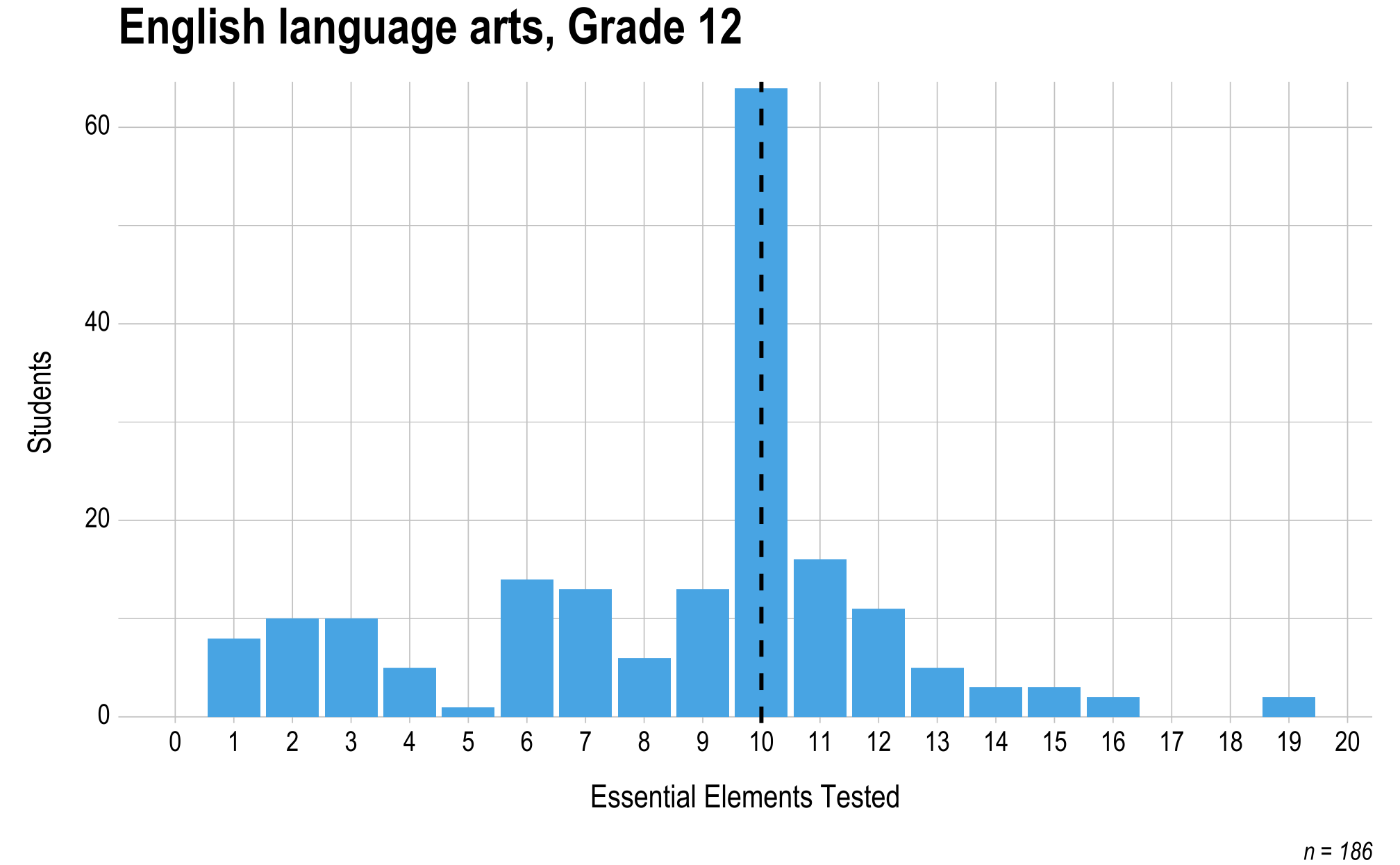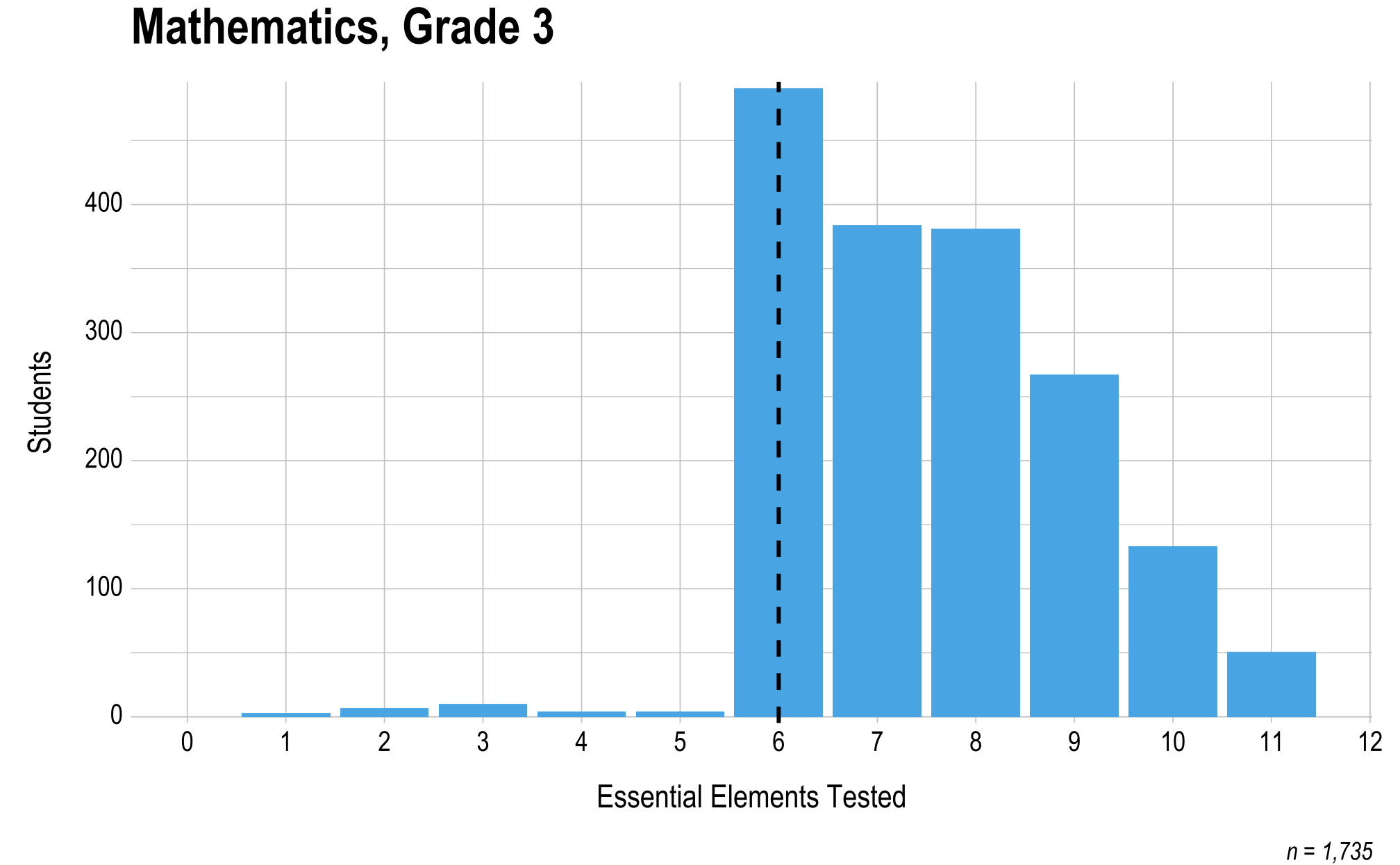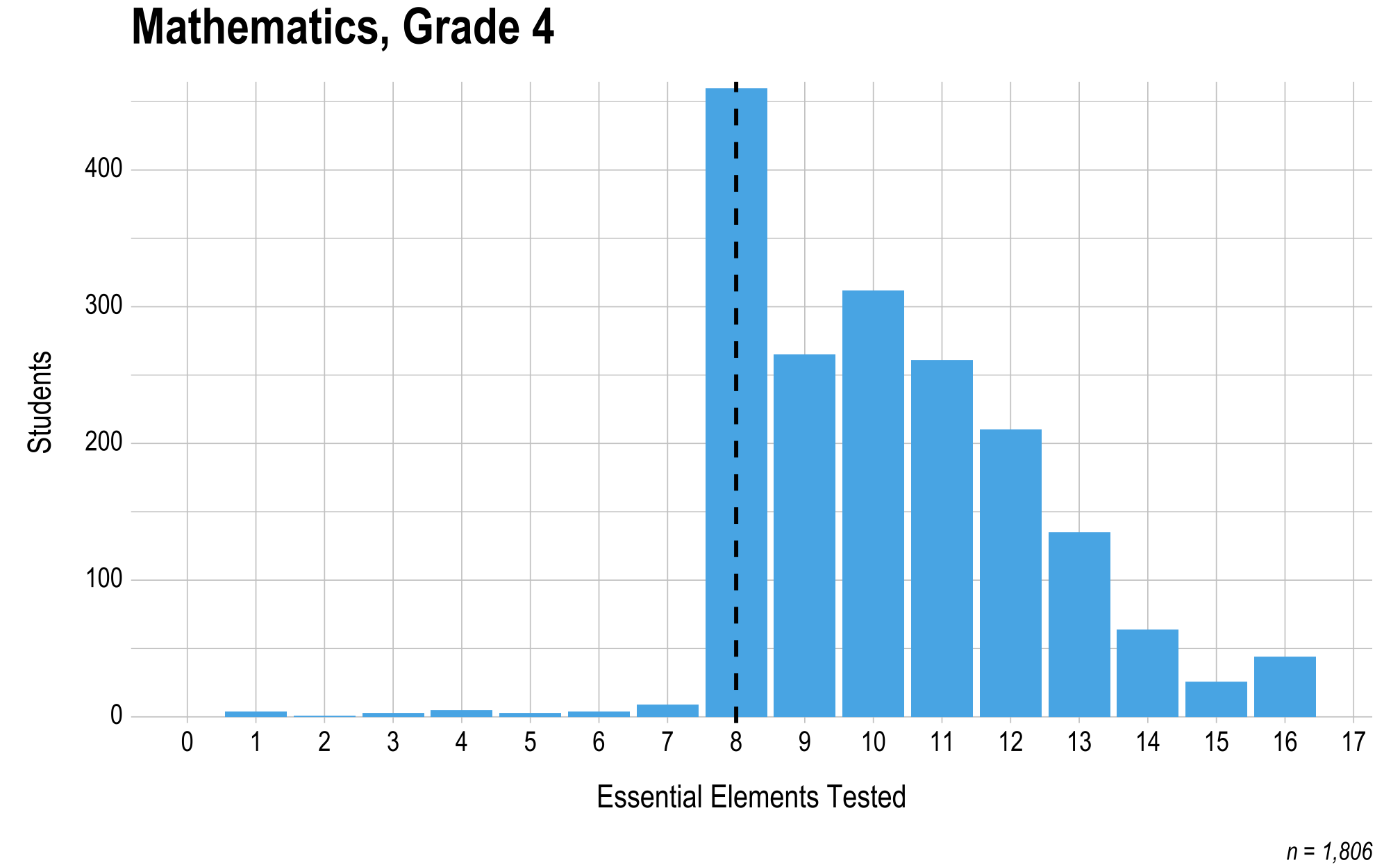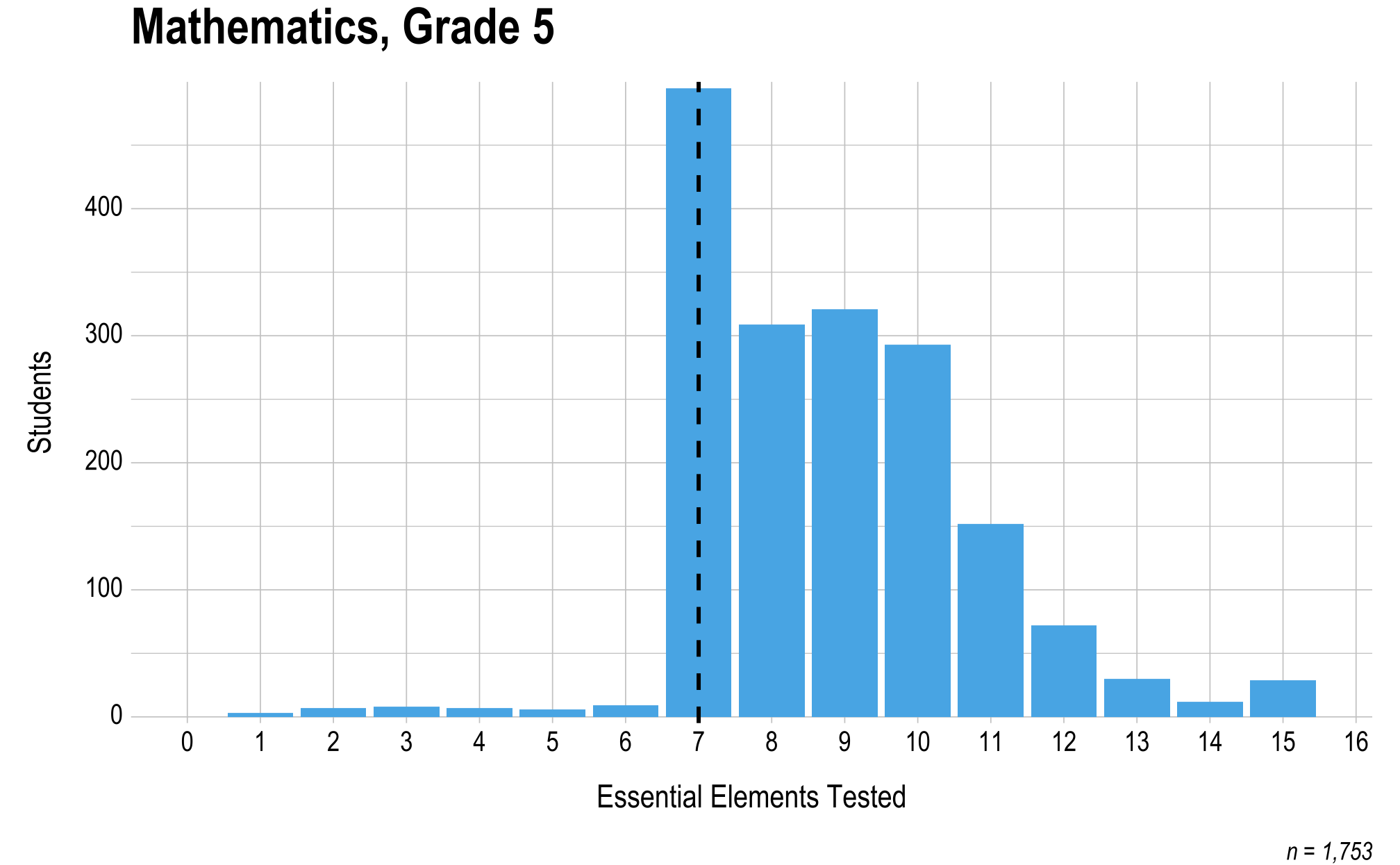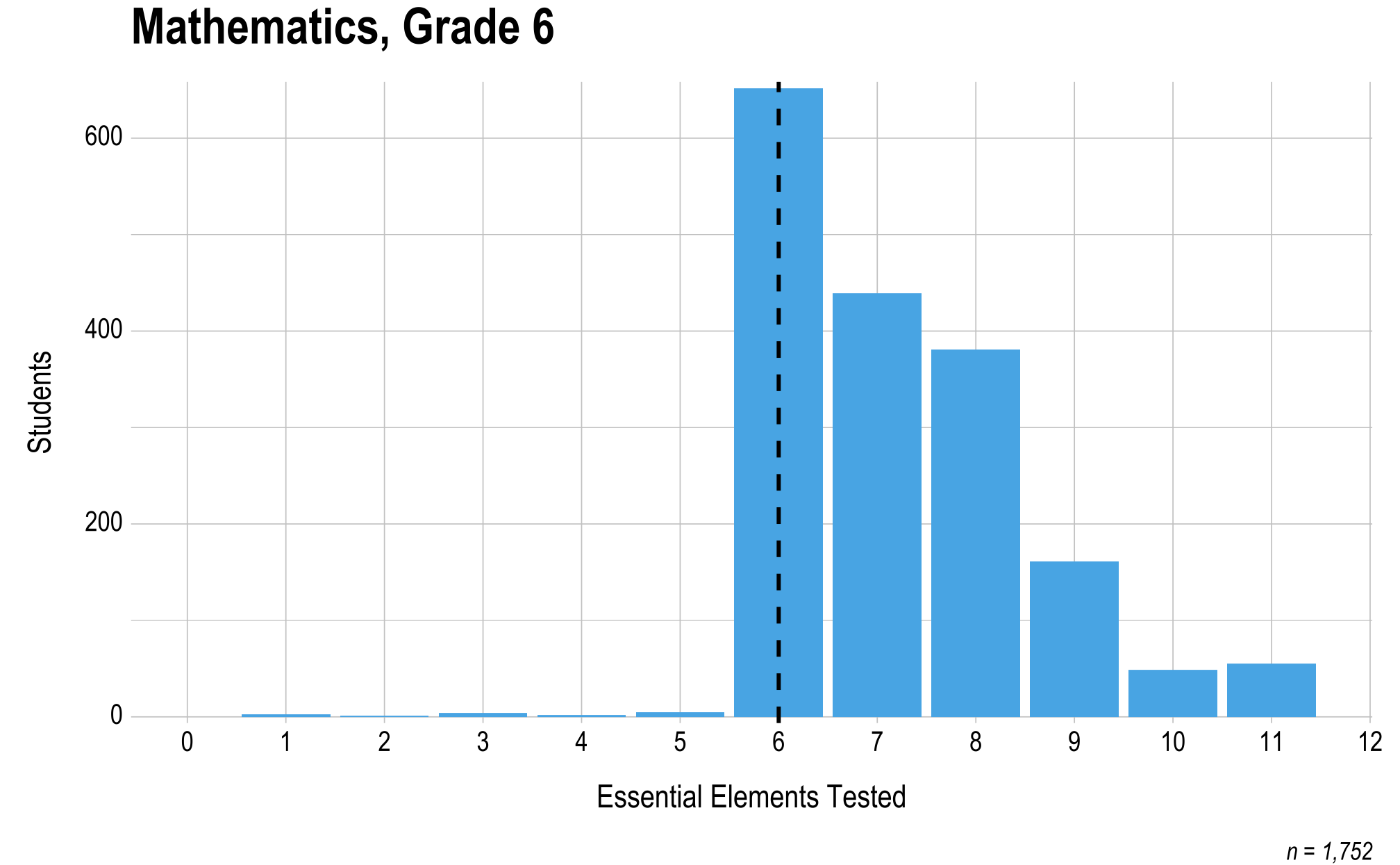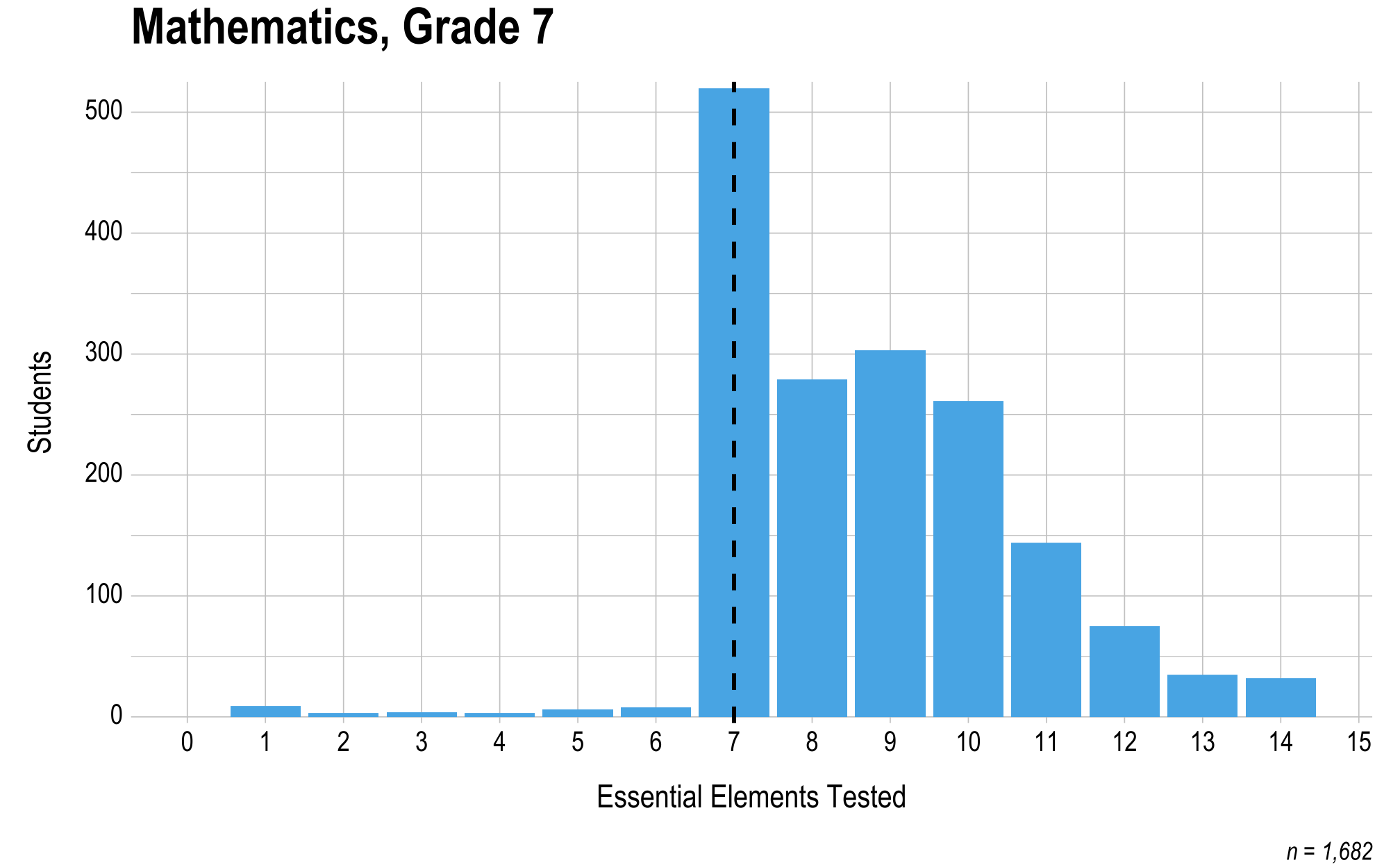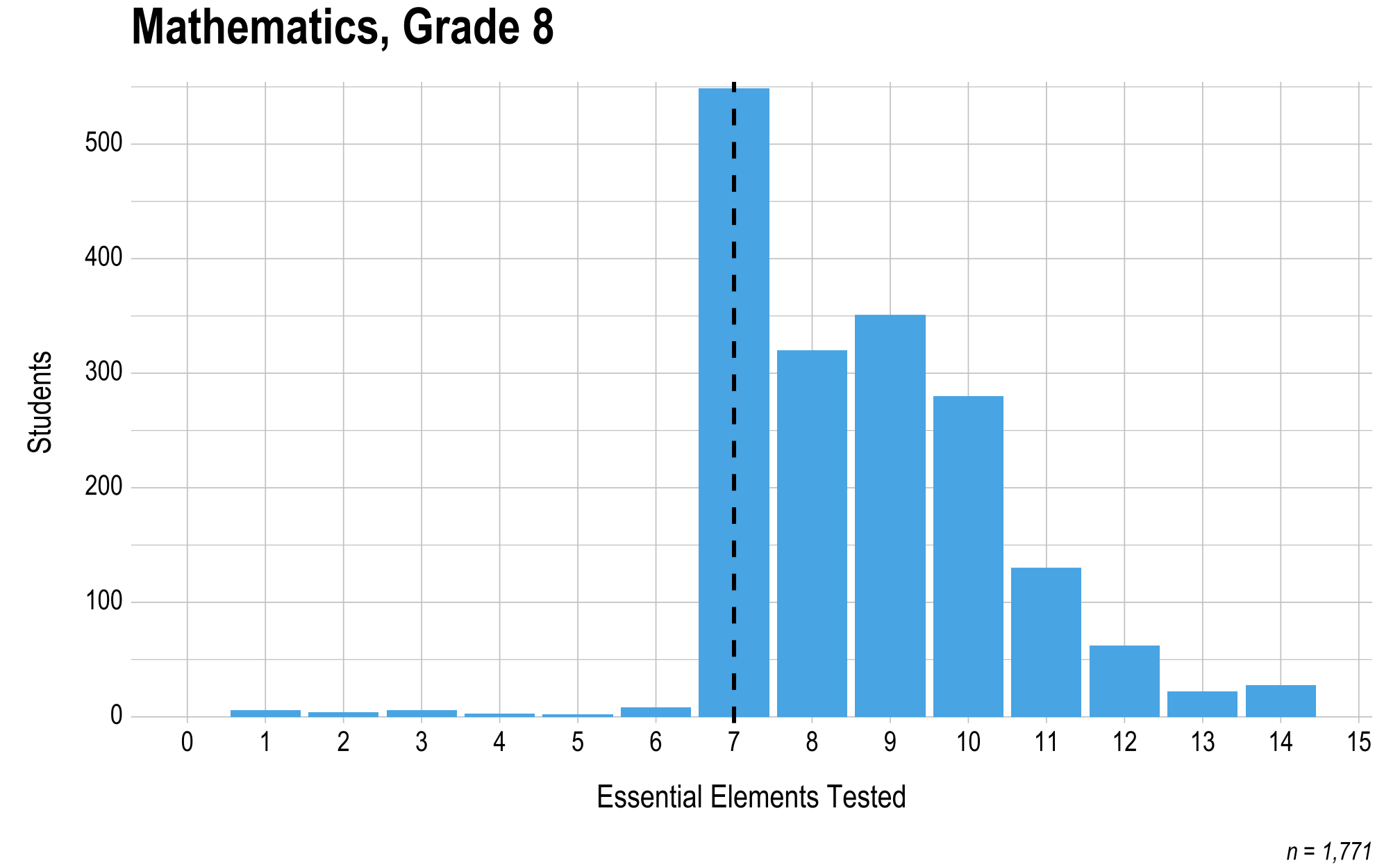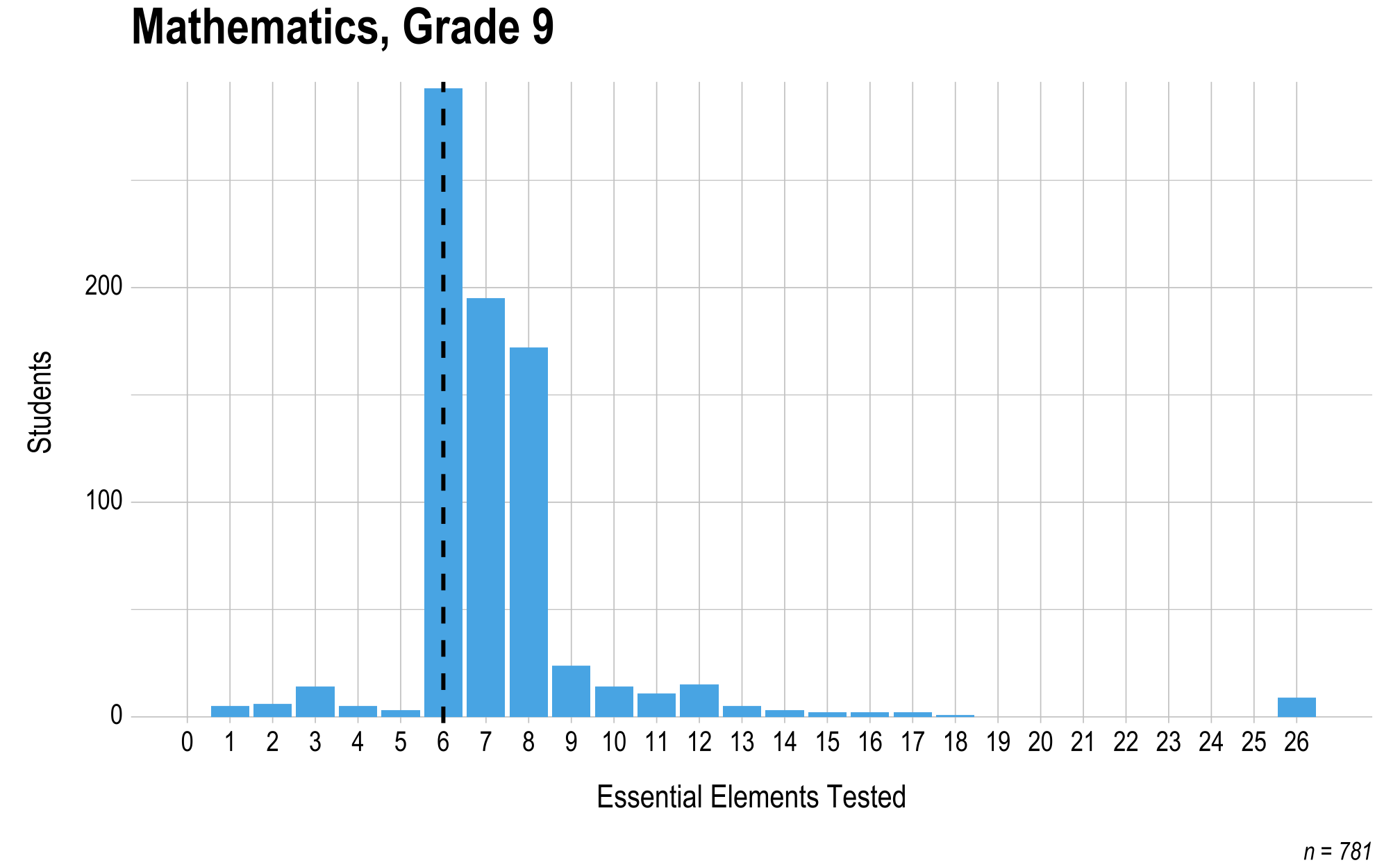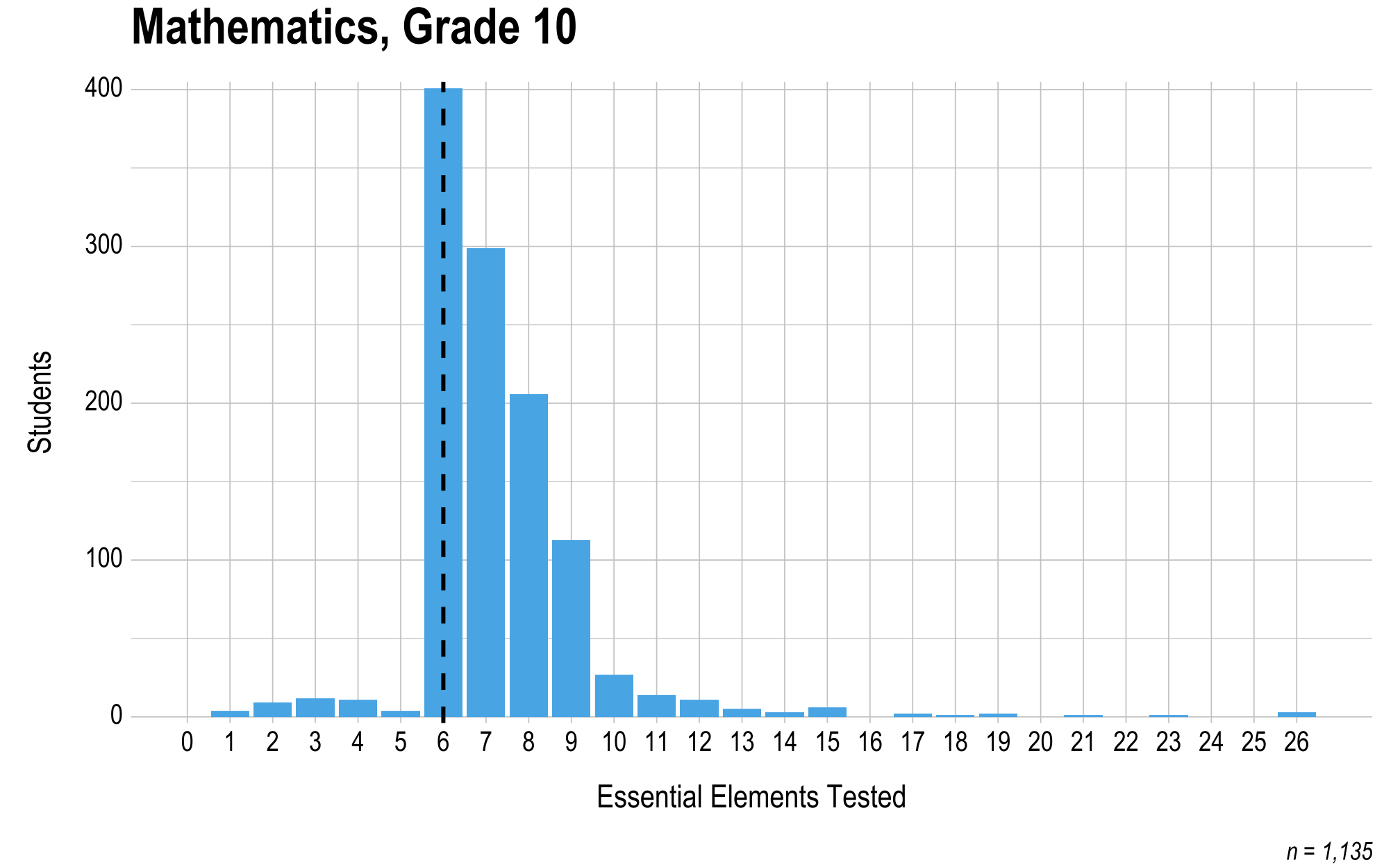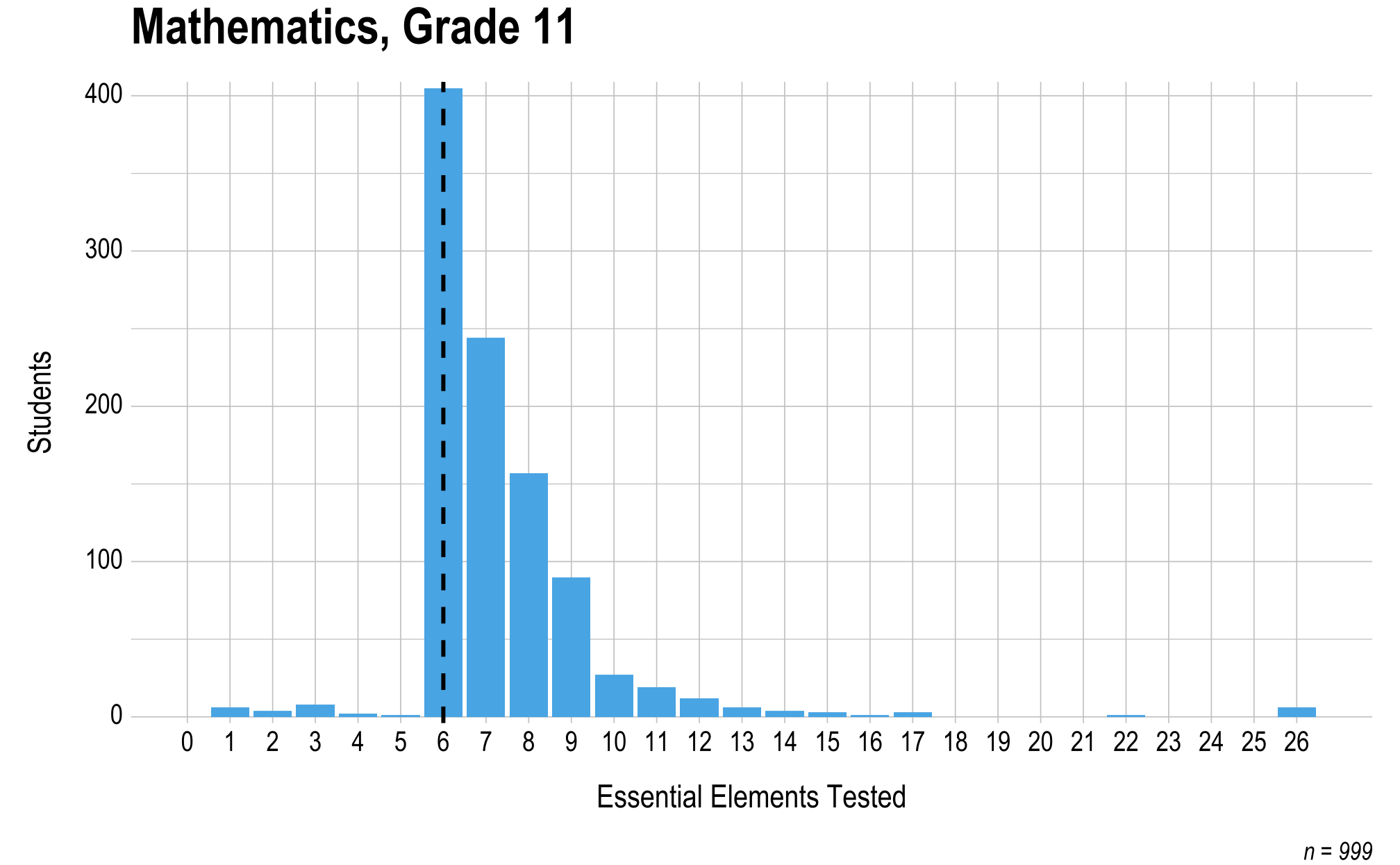D Supplemental Information About Assessment Delivery
D.1 First Contact Survey Items Used for Determining Complexity Bands
A subset of questions from the First Contact survey are used to determine the expressive communication, English language arts, mathematics, and writing complexity bands. The questions from the survey used to determine each band are shown in the following sections.
D.1.1 Expressive Communication
Does the student use speech to meet expressive communication needs?
- Yes
- No
Choose the highest statement that describes the student’s expressive communication with speech.
- Regularly combines 3 or more spoken words according to grammatical rules to accomplish a variety of communicative purposes (e.g., sharing complex information, asking/answering longer questions, giving directions to another person)
- Usually uses 2 spoken words at a time to meet a variety of more complex communicative purposes (e.g., obtaining things including absent objects, social expressions beyond greetings, sharing information, directing another person’s attention, asking/answering questions, and commenting)
- Usually uses only 1 spoken word at a time to meet a limited number of simple communicative purposes (e.g., refusing/rejecting things, making choices, requesting attention, greeting, and labeling)
Does the student use sign language in addition to or in place of speech to meet expressive communication needs?
- Yes
- No
Choose the highest statement that describes the student’s expressive communication with sign language.
- Regularly combines 3 or more signed words according to grammatical rules to accomplish a variety of communicative purposes (e.g., sharing complex information, asking/answering longer questions, giving directions to another person)
- Usually uses 2 signed words at a time to meet a variety of more complex communicative purposes (e.g., obtaining things including absent objects, social expressions beyond greetings, sharing information, directing another person’s attention, asking/answering brief questions, and commenting)
- Usually uses only 1 signed word at a time to meet a limited number of simple communicative purposes (e.g., refusing/rejecting things, making choices, requesting attention, greeting, and labeling)
Does the student use augmentative or alternative communication in addition to or in place of speech or sign language to meet expressive communication needs?
- Yes
- No
D.1.2 English Language Arts
Student’s approximate instructional level of reading text with comprehension (print or Braille): Mark the highest one that applies.
- Above third grade level
- Above second grade level to third grade level
- Above first grade level to second grade level
- Primer to first grade level
- Reads only a few words or up to pre-primer level
- Does not read any words when presented in print or Braille (not including environmental signs or logos)
Reading skills: MARK EACH ONE to show the approximate percent of time that the student uses each skill—0% (student does not exhibit this skill), none to 20% of the time, 21% to 50% of the time, 51% to 80% of the time, More than 80% of the time.
- Recognizes single symbols presented visually or tactually (e.g., letters, numerals, environmental signs such as restroom symbols, logos, trademarks, or business signs such as fast food restaurants)
D.1.3 Mathematics
Math skills: MARK EACH ONE to show the approximate percent of time that the student uses each skill—0% (student does not exhibit this skill), none to 20% of the time, 21% to 50% of the time, 51% to 80% of the time, More than 80% of the time.
- Sorts objects by common properties (e.g., color, size, shape)
- Adds or subtracts by joining or separating groups of objects
- Forms groups of objects for multiplication or division
- Multiplies and/or divides using numerals
D.1.4 Writing
Writing skills: Indicate the highest level that describes the student’s writing skills. Choose the highest level that the student has demonstrated even once during instruction, not the highest level demonstrated consistently. Writing includes any method the student uses to write using any writing tool that includes access to all 26 letters of the alphabet. Examples of these tools include paper and pencil, traditional keyboards, alternate keyboards and eye-gaze displays of letters.
- Writes paragraph length text without copying using spelling (with or without word prediction)
- Writes sentences or complete ideas without copying using spelling (with or without word prediction)
- Writes words or simple phrases without copying using spelling (with or without word prediction)
- Writes words using letters to accurately reflect some of the sounds
- Writes using word banks or picture symbols
- Writes by copying words or letters
- Scribbles or randomly writes/selects letters or symbols
